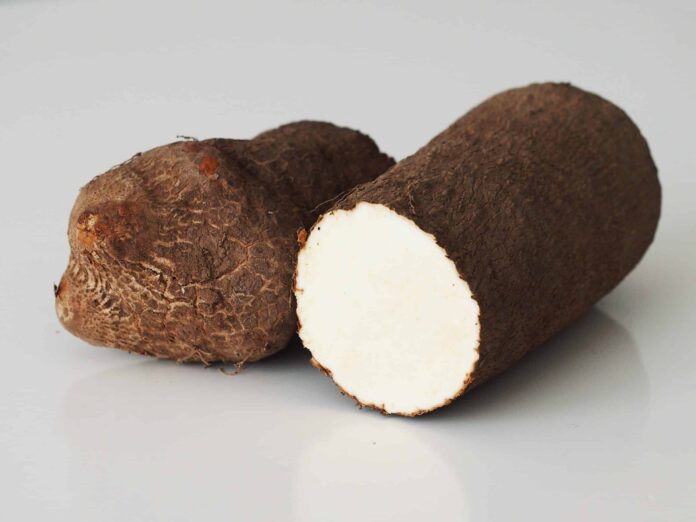Yams are starchy tuberous roots that belong to the genus Dioscorea and are widely cultivated in tropical and subtropical regions. They differ significantly from sweet potatoes, despite frequent mislabeling in some parts of the world, such as the United States. True yams have rough, scaly skins and can grow to be quite large, sometimes weighing up to 70 kg (154 lbs).
Key Characteristics:
- Botanical Family: Yams are monocotyledons, belonging to the family Dioscoreaceae.
- Diverse Varieties: There are over 600 species of yams, with Dioscorea rotundata (white yam) and Dioscorea alata (water yam) being among the most common cultivated types.
Interesting Facts About Yam:
- Yam vs. Sweet Potato: Although often confused, yams (Dioscorea species) are entirely different from sweet potatoes (Ipomoea batatas). True yams are starchier and less sweet, with rough, scaly skins. This confusion is especially prevalent in the U.S., where orange-fleshed sweet potatoes are sometimes labeled as yams for marketing
- World’s Largest Yam: A Nigerian farmer in Akokwa, Imo State, harvested what is believed to be the world’s largest yam, weighing a massive 179 kilograms (395 pounds). The achievement highlights the potential size yams can reach under ideal conditions, even in less fertile soils
- World’s Largest Sweet Potato Mislabeling: An 81-pound tuber grown in Spain was initially referred to as a yam but was later identified as a sweet potato. This common mix-up occurs due to regional terminology differences, particularly in the Americas
- Cultural Importance in Africa: In West Africa, yams symbolize prosperity and are deeply ingrained in cultural ceremonies. During the annual New Yam Festival, communities come together to honor their ancestors and celebrate the harvest. The event features dances, music, and traditional yam dishes
- Wild Yam’s Medicinal Use: Wild yam (Dioscorea villosa) contains diosgenin, a precursor for synthetic hormones. Diosgenin has been historically used to produce contraceptives, and modern herbalists use it in remedies for menopause and inflammation
- Largest Producer: Nigeria grows over 45 million metric tons of yams annually, dominating global production. Yams are a staple in Nigeria’s diet, featuring prominently in dishes like pounded yam and yam porridge
- Nutritional Value: Rich in fiber, potassium, and antioxidants, yams support heart health and digestion. They also contain vitamin C, which aids the immune system, and complex carbohydrates, offering long-lasting energy
- Low Glycemic Index: Yams’ slow-digesting carbohydrates are ideal for managing blood sugar levels, making them a preferred food for people with diabetes. They provide a steady energy source without spikes in glucose levels
- Storage Durability: Properly stored yams can last for 6–8 months, providing an essential food reserve during periods of scarcity, particularly in rural areas
- Growth Cycle: Yams typically take 8–12 months to mature. They require staking to support the climbing vines, which grow up to 15 meters in length, depending on the species
- Large Sizes: Giant yams can reach astonishing sizes, with the largest recorded weighing over 300 pounds. These are often grown for ceremonial or competitive purposes
- Symbolism in Festivals: The New Yam Festival reflects gratitude to deities for a bountiful harvest. It features rituals like the ceremonial breaking of the first yam, symbolizing a fresh start
- Economic Significance: As a key export for countries like Ghana, yam sales boost rural economies and provide livelihood for millions of farmers. Yam exports include fresh tubers and processed products like flour
- Bitter Yam’s Unique Traits: Bitter yams require processing to remove toxins but are valued in West Africa for their drought resistance and use as a famine food
- Wild Yam in Cosmetics: Wild yam extracts are included in anti-aging creams and serums, as they help hydrate and rejuvenate skin by promoting collagen production
- Cooking Tip: Roasting yams caramelizes their natural sugars, enhancing their flavor. Steaming and frying are also popular methods that bring out different textures and tastes
- Yam Flour: Used extensively in Nigerian cuisine, yam flour (elubo) is made from dried yam slices and forms the basis for dishes like amala, often paired with rich stews
